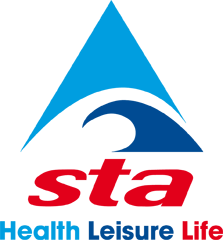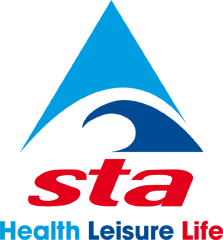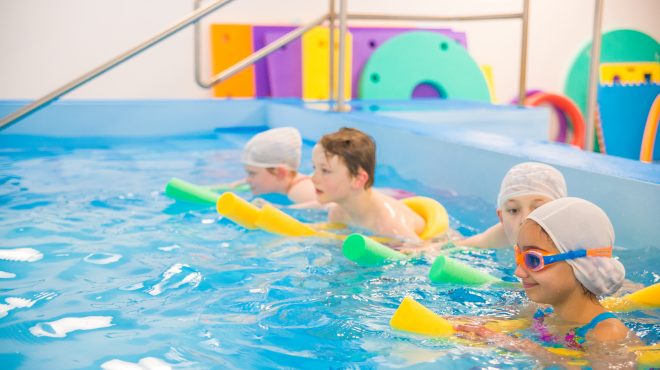Advise on Pools Suitable for Schools
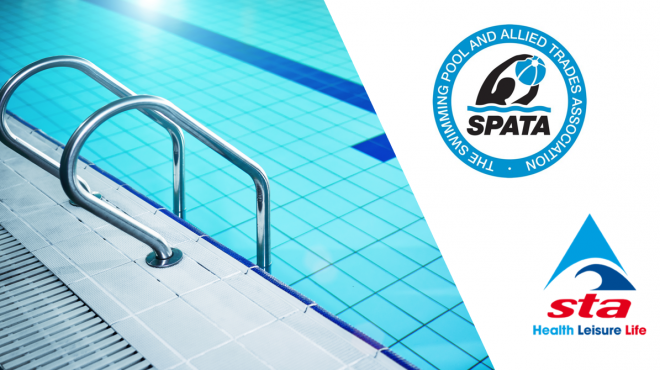
In support of our ‘Swim schools – do you want to build a swimming pool’ blog series, STA and SPATA have listed here the main points to consider, in relation to the project requirements for a pool suitable for a swim school.
First it must be stated that “any pool used for swimming teaching should undergo a rigorous risk assessment for all aspects of use, and from these assessments a comprehensive set of risk controls should be in place to ensure a safe, hygienic pool is provided for all users of the pool and building”.
STA and SPATA advise that the basic facilities etc. needed for a swim school are:
- An indoor (or enclosed) pool for all year teaching is preferable, but not necessarily essential.
- The pool size is important to ensure the correct water area for the purpose and number of persons using the pool (safe bather area). The ideal water depth to introduce the individual to learning to swim can typically range from 0.8m – 1.2m. For babies / children, the preferred water depth is around 1.2m to ensure that the supporting adult remains comfortable within the water (enabling them to maintain a safe position at all times). Where the pool depth is greater than 1.35m this should be noted in the risk assessment (and PSOP), as the water depth may be an issue for some of the participants learning to swim. Varying depths will have a direct effect on staffing the pool in terms of teaching and lifesaving.
- Easy entry and exit to (and from) the pool. For ease of access to the pool, steps (and handrails) are generally more useful and accessible than ladders, but other entry and exit methods may be used. If it is a new build or major building renovation, change of use etc., then disabled access and egress may be compulsory.
- Pool water at the correct temperature (ideally 29oC – 31oC for children and ideally 30oC – 32oC for babies over 3 months) for indoor pools. The water temperature is important to have set at the optimum range for teaching, as it is very difficult to vary the temperature quickly. A risk assessment will determine at what temperature the commercial or domestic pool should be set. The original pool finish should be checked as part of the risk assessment to ensure that it is suitable for these higher water temperatures.
- For indoor pools, the correct pool hall environment, with adequate heating and ventilation is required. The pool hall environment needs to be fit for the purpose so that swimming teachers can be comfortable on poolside and the participants are also not too cold or too hot while being taught. Please note, the air temperature within the pool hall should be the same as, or 1 degree C above, the water temperature to a maximum of 30oC (for staff and visitor comfort). When air temperatures are expected to be below pool water temperatures, evaporation will be excessive, and, will radically increase the energy costs. This should be recognised and discussed with a swimming pool specialist at the design stage.
- The filtration system should be capable of dealing with the design bather load (2.7m2 of water surface area per bather – also take into the account if a responsible adult and swimming teacher is in the water, which in this case would represent 3 bathers). A swim school is considered a type 2 pool (according to BS EN 15288-1) and will require circulation and filtration systems that meet commercial standards. This includes medium rate filtration with a recommended turnover period and effective surface draw off, and bottom drains for all pools, to ensure a safe hygienic pool. However, where this is not possible, then a risk assessment should be carried out to determine whether the existing provision can be made safe and suitable for the proposed purpose with the introduction of control parameters. In most cases, this will require adjustments to the size of filters, probably larger pipework and installing secondary disinfection (e.g. UV) and flocculation. Also, assessment and possible modification of bottom drain(s) and / or low suction outlet(s) to ensure the safety of participants. All flow and return fittings should be assessed to ensure maximum flow rates are not exceeded.
- Appropriate changing and toilet facilities, (with adequate numbers of nappy change facilities where appropriate away from poolside, so that people are not changing nappies at the poolside).
- Ideally, there should be adequate shower facilities to cater for the total number of participants in each of the proposed swim groups.
- The provision of a car park (or parking spaces) will undoubtedly be an advantage. Where onsite parking is not possible, then suitable advice will need to be given to the swim school participants by the swim school owner on how to get to the venue and any restrictions on street / road parking.
- Appropriately qualified teaching and lifesaving staff will be required – see STA Swimming Teaching Code of Practice – available via STA Online
- Suitable rescue equipment is essential, it should be easily available, and include emergency instructions for use, tailored to the actual pool tank and surrounds.
- It is of the utmost importance, in all premises, that the relevant insurances are in place, especially if the pool that is used for swimming teaching and other activities is owned and controlled by another party. Both the swimming teacher’s insurers and the pool owner’s insurers should be satisfied with the conditions of all the relevant insurance provisions. Both public and employers’ liability insurance will potentially be required and needs to be comprehensive for all users and employees specific to aquatic activities.
- A specific degree of knowledge of the pool plant operation is needed and specific pool plant qualified staff are required, if the swim school is operating the swimming facilities, and, where the risk assessment demands. For safe operation a recognised pool plant level 3 qualification and site-based training is essential.
- Pool rules to be set and clearly communicated in relation to to participants’ ‘pool etiquette’, including pre-swim hygiene practices, when not to swim and appropriate swimwear for the age of the participant (e.g. suitable nappies for babies).
- Anti-slip floors and adequate floor drainage is recommended in all wet areas.
- Swim school operators should be aware of what cleaning products and pool chemicals are to be used (to ensure they are compatible with the pool chemicals) including appropriate storage of all chemicals in a detailed COSHH assessment, highlighting each product’s potential risk to H & S. Specific PPE is required for all potential circumstances.
- All participants or their guardians should notify the swim school if the participant has any relevant health conditions (e.g. heart problems / allergies, stomach problems, epilepsy, etc.).
- Swimming teachers, especially in outdoor facilities, also need to take into consideration such things as:
- Changing room location
- Blankets and foil blankets required for an evacuation of an indoor pool
- Seasonal temperature change
- Evacuation points
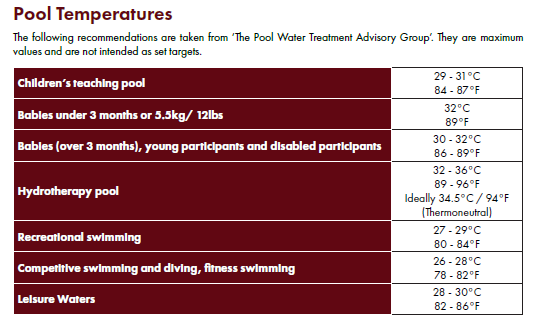
Ref: STA Swimming Teaching Code of Practice – available via STA Online
- Categories
- Building a Swimming Pool – Real-Life Stories
